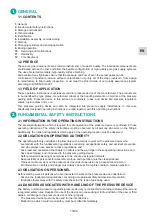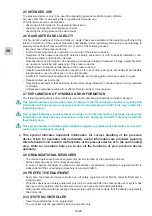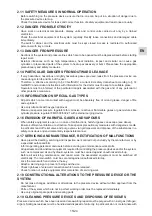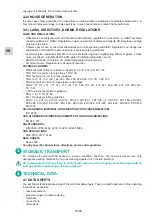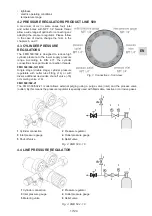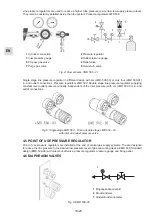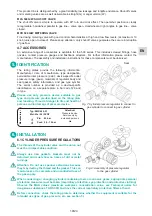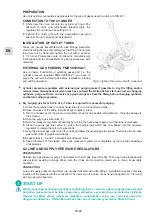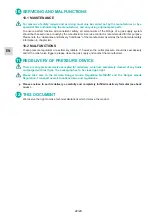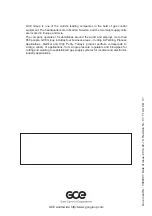
21/24
EN
Before switching on the pressure device ensure that no-one can be put in a situation of danger by
starting up the pressure device.
Use only pressure device with external gas purging when working with toxic, corrosive or pyrophoric
gases.
PREPARATION
Take care that process and purge gas lines are connected gas tight to the appropriate in- and outlets. Turn
the handwheel of the regulator counter-clockwise, thereby closing the valve gate. Close all valves.
LEAKAGE TEST
Open the cylinder valve and close immediately. Spray leakage test spray over the cylinder connection. If
there results a formation of bubbles, tighten the cylinder connection until the formation of bubbles stops. If
seals have been changed, repeat the leakage test after 24 hours respective tighten the cylinder connection
again.
EXTRACTING PROCESS GAS
Slowly open the cylinder valve. Watch the inlet pressure gauge. Set the desired outlet pressure by turning
the regulator handwheel clockwise. Set the desired flow volume on the metering valve (if applicable).
CYLINDER CHANGE
When changing cylinders with toxic or corrosive gases the necessary personal safety measures
must be taken (respiratory protection, eye protection and protective clothing.) Observe the MAK
values (see Technical norms for dangerous substances, TGRS 900) and have the correct respiratory
protection filters at hand.
Did you use corrosive or toxic gases, you have to purge the pressure device with inert gas (see
chapter 6.2 ”External gas purging”). This will ensure that the remaining dangerous gas will be
purged completely.
PREPARATION
1.
Tightly close the shut-off valve on the gas cylinder. Close the inlet valve.
2.
Open the outlet pressure valve, if there is any. Empty the pressure regulator completely by turning the
handwheel clockwise. The indicators on the inlet and outlet pressure gauges must both be all the way
on „0“.
3.
Turn the handwheel of the regulator counter-clockwise as far as possible (valve gate closed).
4.
Close the process gas valve.
CYLINDER CHANGE
Using cylinder pressure regulator FMD 500/502-21, you have to purge at first. Loosen the union nut on the
gas cylinder using a spanner. Control the threats. Change the seal. Connect the new cylinder following the
steps above (see chapter 6.2). Make a leakage test (following the steps above).
TAKING OUT OF OPERATION
Release the pressure on pressure controller and lines by directing the gas to the consumer. The
indicators on the inlet and outlet pressure gauges must be all the way on „0“. With corrosive or
toxic gases, purge all components with inert gas. The necessary personal safety measures must be
taken (respiratory protection, eye protection and protective clothing.) Observe the MAK values (see
Technical norms for dangerous substances, TGRS 900) and have the correct respiratory protection
filters at hand.
9.1 CYLINDER PRESSURE REGULATORS
For a brief interruption of gas removal it is sufficient to close the shut-off valve on the regulator. For a longer
interruption the regulator must be released from pressure by turning the handwheel counter-clockwise.
Close the cylinder valve as a safety precaution.
9.2 SUPPLY PRESSURE REGULATORS
Close the preliminary shut-off valve.
9.3 LINE PRESSURE REGULATORS
Close the pressure regulator by turning counter-clockwise.
9.
8.
Summary of Contents for druva LINE 200
Page 12: ......


